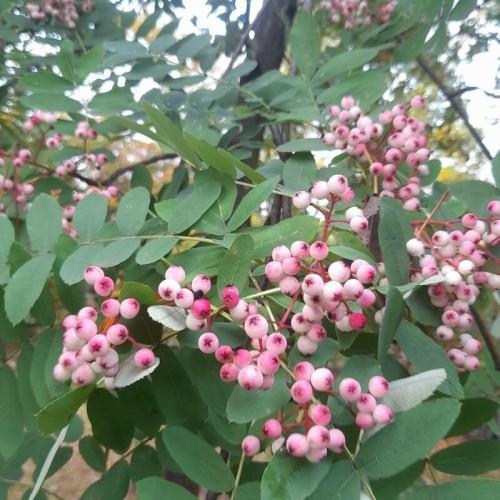
Pink Pagoda mountain ash
Sorbus hupehensis 'Pink Pagoda'
Cycle:
Perennial
Watering:
Frequent
Hardiness Zone:
6
Flowers:
Flowers In Spring
Sun:
Full sun, Part sun/part shade
Soil:
Humus rich, Well-drained
Fruits:
Fruits In Autumn Ready In
Edible:
Yes
Leaf:
Yes
Growth Rate:
Moderate
Maintenance:
Low
Drought Tolerant:
Yes
Thorny:
Yes
Care Level:
Medium
watering
It is important to water Pink Pagoda mountain ash (Sorbus hupehensis 'Pink Pagoda') regularly, but not too heavily. During the summer months when the plant is in active growth and flowering, water it once or twice a week, allowing the top inch of soil to dry between waterings. During the winter months, reduce watering to once every 2 weeks. Make sure the soil never becomes soggy, and always water in the morning so the foliage has time to dry off before evening. When temperatures turn cold and rainfall is sparse, resume summer-level watering to prevent the plant from becoming stressed. It is important to note that in times of extreme drought, these plants should not be watered at all.
sunlight
Pink Pagoda mountain ash plants, which are better known as Sorbus hupehensis 'Pink Pagoda', usually prefer to be planted in areas with a good amount of sunlight. Ideally, they would be planted in a place that receives full sun (around 6 to 8 hours of direct sunlight each day) during the spring and summer months, but can tolerate some shade in the afternoons. Part sun (4 to 6 hours of direct sunlight per day) is usually satisfactory in the autumn and winter months. If possible, it is best to avoid planting in shaded areas where the plant would not receive any direct sunlight for long periods.
pruning
Pink Pagoda mountain ash should be pruned during the winter months while the tree is dormant. Pruning should be light; remove dead or damaged branches and lightly shape the branching structure. Avoid pruning too much or too often as this could weaken and damage the tree.
